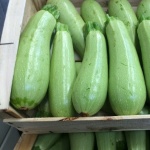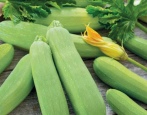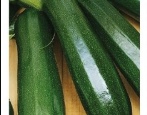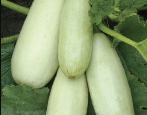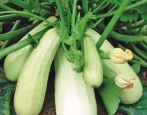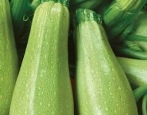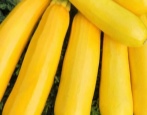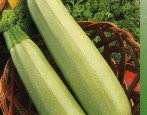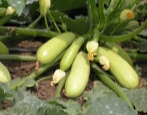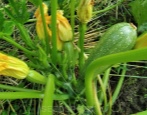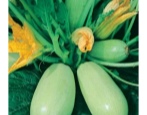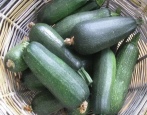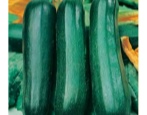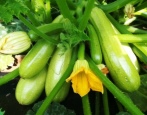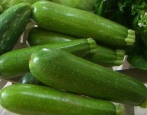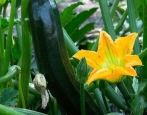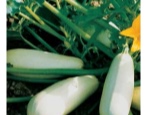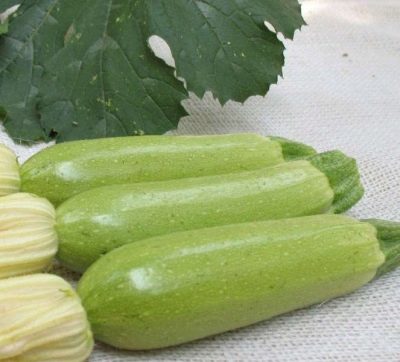
- Authors: Sakata
- Name synonyms: Suha
- Year of approval: 2009
- Ripening terms: early maturing
- The period from germination to harvest: 35-37 days
- Description of the plant: compact
- Leaves: small, green with a mottling of medium intensity, strongly dissected
- Fruit shape: in technical ripeness cylindrical
- Fruit color: light green, with occasional whitish spots
- Pulp (consistency): dense, tender, medium juiciness
Choosing a zucchini variety for planting on a garden ridge, many vegetable growers prefer hybrids, since they are more hardy, quickly adapt to climatic conditions, rarely get sick and bear fruit well. A striking example of this is the early ripe hybrid Sukha of Japanese selection.
Breeding history
Sukha zucchini is a first generation hybrid bred by breeders of the Japanese company Sakata Vegetables Europe S. A. S. in 2006. The vegetable crop was entered into the State Register of approved for use in 2009. The vegetable is zoned in the North Caucasus region. You can grow zucchini both in the garden and in greenhouse conditions.
Description of the variety
Japanese vegetable selection is a compact bush type plant. The bush has weak branching, powerful stems, moderate thickening with small leaves of a light emerald color. A distinctive feature of the plant is the presence of small spots on the leaf plates, as well as a strong dissection of the ends of the leaves. During the flowering period, large pale yellow flowers of a standard shape appear on the bushes.
Characteristics of the appearance of plants and fruits
The hybrid belongs to the medium-fruited varieties. The specimens ripen the same and aligned. The average weight of a squash varies between 300-700 grams. A shortened vegetable grows - the length barely reaches 14-15 cm, and the diameter is about 4-6 cm. The shape of the zucchini resembles a regular cylinder. The matured specimen has a uniform light green color, which can be diluted with blurred whitish spots. The peel of the vegetable is thin and tender, with a smooth and glossy surface, on which the ribs are slightly visible.
Harvested zucchini can easily be transported, and can also be stored for a long time in a cool and dry room, where the temperature is + 5 ... 10 degrees. During storage, the fruits should not come into close contact with each other.
Purpose and taste
Despite the fact that Suha is a hybrid, the zucchini tastes excellent. The light yellow pulp is characterized by a moderately firm, tender, medium-term consistency without voids and wateriness. Seeds in the pulp are medium in size in small quantities, not tough. The taste of the vegetable is harmonious, delicate and pleasant. The concentration of dry components in the pulp is about 5%, and the concentration of sugars is up to 2.5%.
Ripe fruits are widely used in cooking - zucchini are fried, stuffed, added to various hot dishes, and also frozen and canned. This type is great for processing into salads and caviar.
Ripening terms
Suha represents a category of early maturing species. The growing season lasts less than 40 days - 35-37 days. Vegetables ripen together. Fruiting can be observed throughout the summer period - the more often the fruits are harvested, the more new ones are set. It is not recommended to allow the zucchini to over-ripen, as they become dryish and tougher.According to vegetable growers, slightly unripe specimens are more tasty - tender and juicy.
Yield
The hybrid is high yielding. If you properly care for the planted crop, you can get an average of 408-1235 c / ha. About 35 kg of leveled specimens are collected from 1 m2 of plantings.
Growing and caring
The culture is grown mainly by the seed method. Planting is carried out from the end of April to the first week of June. The optimal temperature regime is considered to be + 14 ... 18 degrees. Recommended for planting is a scheme of 60x60 cm. Seeds are laid to a depth of 3-6 cm. Germinated seeds can be placed in a hole in 2 units, and non-sprouted in 3-4 pieces. After planting, the ridges are watered abundantly with warm water.
If cold snaps are possible after sowing, then you can cover the bed with planted zucchini with agrofibre or polyethylene, which will both protect and accelerate germination.
The agricultural technology of vegetable crops consists of basic measures - regular watering (every 4-7 days, depending on the weather), top dressing 4 times during the growing season (the vegetable prefers mineral complexes), weeding row spacings, loosening, prevention of viruses and pest infestations.
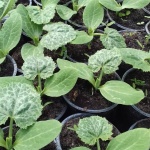

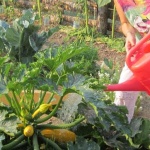
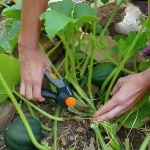
Soil requirements
Zucchini, like most vegetable crops of the melon family, prefer light, loose, nutritious and breathable soils with low acidity. The best option would be loamy or sandy loam soil.
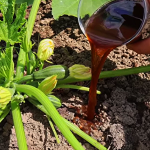
Required climatic conditions
The hybrid is the owner of good stress resistance, therefore it easily tolerates temperature fluctuations, which are not reflected in the formation of ovaries. The vegetable is planted in a weed-free area, which is well illuminated by the sun, and also has a barrier from drafts and gusty winds.
Disease and pest resistance
The variety is resistant to many diseases (powdery mildew, bacteriosis, anthracnose). The most dangerous pests attacking bushes are: thrips, spider mites and melon aphids. Correct adherence to the rules of care will help to avoid diseases.
